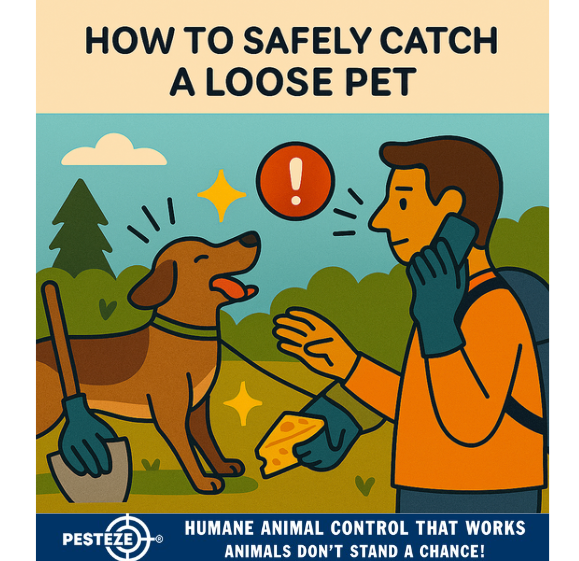HOW TO SAFELY CATCH A LOOSE PET

HOW TO SAFELY CATCH A LOOSE PET
SUMMARY
A loose pet can quickly become a danger to itself and others, especially near roads or unfamiliar areas. Whether it’s your own pet or someone else’s, knowing how to safely catch a loose animal is essential. This guide provides calm, effective, and humane strategies to help you secure a runaway dog, cat, or other domestic animal without causing panic or injury. With the right approach, you can bring the pet to safety and prevent further risk.
FEATURES
-
Stay Calm and Observant: Keep your voice low and movements slow to avoid scaring the animal.
-
Use Familiar Cues: Call the pet’s name or use known commands to encourage it to come closer.
-
Avoid Chasing: Learn why running after a loose pet can make the situation worse.
-
Create a Safe Barrier: Use fences, gates, or parked cars to gently guide the pet into a secure area.
-
Use Treats or Toys: Lure the pet with food or favorite items to gain its trust.
-
Check for ID and Contact Help: Look for tags or microchips and notify local shelters or animal control.
GUIDE DESCRIPTION
Catching a loose pet can be stressful, but acting quickly and thoughtfully can prevent accidents and reunite the animal with its owner. Whether the pet is yours or a stray, this guide offers step-by-step instructions to help you respond safely and effectively.
Begin by staying calm. Loud voices or sudden movements can frighten the animal and cause it to bolt. Speak softly and crouch down to appear less threatening. Observe the pet’s body language—if it seems scared or aggressive, keep your distance and avoid direct eye contact.
If the pet is familiar to you, use its name or known commands like “come” or “sit.” Sometimes, a familiar voice is enough to stop a pet in its tracks. Avoid chasing the animal, as this often triggers a flight response and can lead to dangerous situations, especially near traffic.
Try to create a safe enclosure using nearby objects like fences, gates, or even your car. Slowly guide the pet toward a confined space where it can’t escape. If possible, use treats, food, or toys to lure the animal closer.
Once the pet is secure, check for identification. A collar tag or microchip can help locate the owner. If no ID is found, contact local animal shelters, veterinarians, or animal control for assistance.
By following these steps, you’ll increase the chances of safely catching a loose pet and ensuring it receives the care and protection it needs.
- Amy Chang


Comments 0